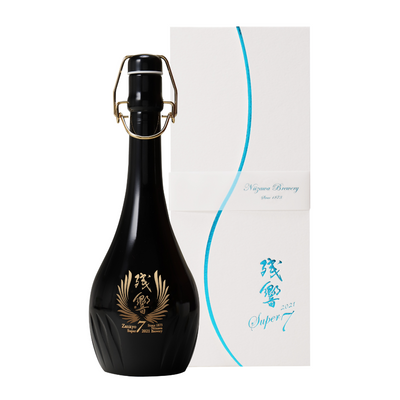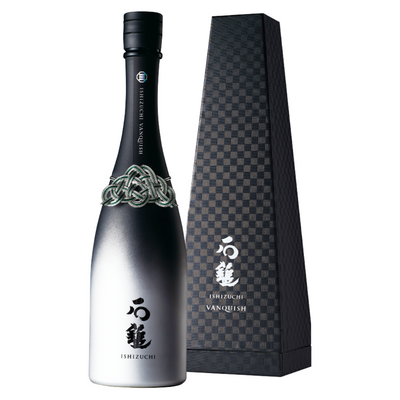Part 6: Basic Principles of Sake and Food Pairing
A great thing about sake is that it’s incredibly versatile to pair with food. With a few exceptions, most sake goes well with most food. This is because sake is generally low in both acidity and tannins, two components of wine that make wine both pleasant but also difficult to pair in some circumstances.
While the most common pairing for sake is of course Japanese food, sake fits incredibly well with a range of dishes: roasted chicken, grilled fish or even sharp cheeses. If you’re curious to try these matchups then head over to our recipe section or follow our Instagram account where we will regularly post specific recipes and pairing ideas.
That being said, there are a few principles to keep in mind when pairing sake:
Basic Principles of Sake Pairing
Salty or Acidic Foods
Salt-heavy or acidic foods (think lemon or vinegar) such as oysters, grilled fish with lemon or even roast chicken make sake seem less dry and acidic and will highlight the sweetness and fruitiness. To counteract this, select a sake that is more dry.
These kinds of foods are perfectly paired with the sakes in our Light & Dry category.
Umami-Laden Foods
Rich, meaty foods such as steak, miso-soup or aged cheeses tend to increase the dryness and acidity of sake and decrease the sweetness and fruitiness, so something a touch sweeter usually fits best.
The sakes in our Vivid & Fresh description generally fit this description, but if you're adventurous then any of the sakes in Bold & Aged would also be a fine match.
Spicy Foods
Spicy foods will tend to make sake taste dryer to pair with something with a hint of sweetness, such as most of the sakes in our Vivid & Fresh category.
Sweet Foods
Sweet foods usually require sake that is as sweet at the food being eaten, otherwise the sake will end up tasting flat. For desserts and other sweet foods check out the sakes in our Sweet Sake section.
Pairing Sake With Types With Food
 Light & Dry
Light & Dry
A light aroma and a refreshing taste with clean and crisp characteristics can be a good match with simple and light foods, especially when those are either predominantly salty or acidic (lemony or vinegary).
Sushi and sashimi from white or moderately fatty fish would work well but also things like Pan-Fried Mackerel With Tomato Vinaigrette, or a simple grilled fish with lemon. Moderately oily foods such as Roasted Herb-Buttered Chicken can work as well as the sake helps to wash away the fats and reset your palate. Finally, anything acidic like a salad or a fish or beef carpaccio will also fit this kind of sake.
 Vivid & Fresh
Vivid & Fresh
These sakes tend to have higher acidity and a touch of sweetness so they usually pair well with umami-rich or spicy food.
These dishes would include steak, roasted tomatoes or mushrooms, and south-east Asian cuisine.
 Aromatic & Fruity
Aromatic & Fruity
When pairing with food, this sake type is an excellent match for aromatic dishes using vegetables and herbs, such as cilantro, basil, parsley, or thyme. Other good fits could be light dishes such as sashimi or tempura with salt as well as Spaghetti Carbonara.
Due to its delicate nature, this sake type would not be a good fit for heavy flavors.
 Savory & Rich
Savory & Rich
This type of sake is usually full-bodied and rich with umami and would fit well with food with more intense flavors. These include Japanese appetizers like salty squid or pickled daikon with cream cheese. Mussels or grilled with would be another good option for pairing as would potentially Spaghetti Carbonara.
 Bold & Aged
Bold & Aged
These sake have flavors that are often not expected, such as strong notes of herbs, spices, dried fruits, and even meat broth. They can be slightly reminiscent of sherry and thus be drunk as an aperitif or, in the case of sweeter versions, with a dessert.
Umami-rich food and heavy sauces would make a good companion to this sake. A rich meat ragu or matured cheeses, such as aged Comte or Stilton, would make an excellent fit.
 Sweet Sake
Sweet Sake
Sweet sake we define as sake that is obviously sweet, like dessert wine, not ones that have a touch of sweetness. These are best paired with desserts with a similar level of sweetness.
Fruit sakes however, are ideal to enjoy as an aperitif, either with soda water or on the rocks. Citrus sakes can even be heated and this way make a perfect fit for the winter months.




